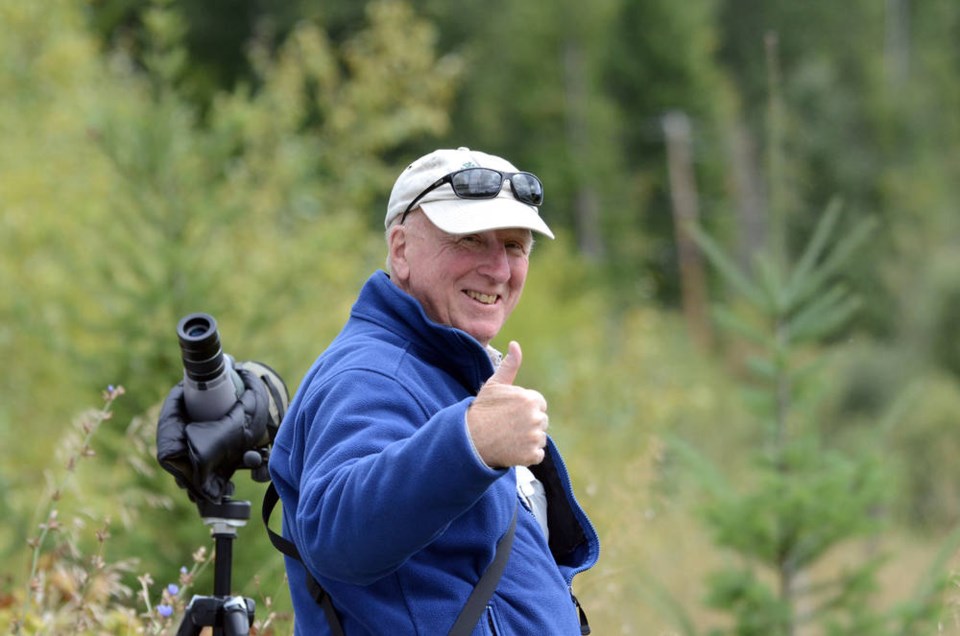Despite the COVID-19 pandemic, the work to monitor between 300 and 350 species of birds, both residents and those migrating through the most southerly point of Vancouver Island continues unabated.
The Rocky Point Bird Observatory is a member of the Canadian Migration Monitoring Network. Members of the network track the migration of birds in the spring and fall each year, adding to our knowledge of population trends, demographics and other essential information about the different species that pass through each location.
Members and volunteers with the non-profit society conduct land bird (passerine) monitoring efforts throughout the year. The fall migration monitoring program lasts 90 days, this year running July 21 until Oct. 18.
“We have two spots where we carry out the program – at Rocky Point (on Department of National Defence lands) and Pedder Bay Marina,” said Kim Beardmore, board president. “Our passerine migration monitoring program will see birds such as robins, warblers, towhees and sparrows.”
He says that the information collected is used by governments, environmental organizations, scientists and others.
Volunteers and members, including two banders, work six hours a day, usually starting a half hour before sunrise. Nets are strung out, capturing birds in flight. Every 2o minutes the nets are examined. Any birds caught will have their vital statistics recorded – species, approximate age, sex, body and wing length, estimated fat and other data.
The data gathered is used to investigate declines and recommend actions to protect the health of ecosystems. The information is shared with the Canadian Wildlife Service and Bird Studies Canada to help scientists better understand migratory trends.
The Rocky Point Bird Observatory is the only Pacific coastal data contributor to the Canadian Migration Monitoring Network.
“Given the large-scale decline in bird populations – we have lost three billion in the last 50 years - and the loss, fragmentation and degradation of native habitats, there is a greater need for monitoring,” said Beardmore.
Funding this year by the Victoria Foundation will not just go towards the group’s 2020 migration monitoring program, but go towards outreach programs.
“The Victoria Foundation has been very helpful partners,” said Beardmore. “It’s not just money. They offer seminars on a number of subjects, such as how to administer, how to organize and how to leverage your funds.”
He says that the foundation will bend over backward to try to help.
“If they don’t have an answer, they will go out and find you the answer.”
Although the monitoring program continues, the public will not be welcome at the organization’s banding stations this year due to adhering to a pandemic protocol for field operations. The organization has suspended all face-to-face programs until it is deemed safe to do so.
The Nocturnal Owl migration banding will continue, with necessary safety restrictions for participants drawn from the organization’s 250 regular members and 150 volunteers.
Beardmore says that people interested in viewing birds and contributing to citizen science join ebird, an online database of bird sightings by amateur naturalists.
Locations in the region that people are likely to view an abundance of birds include Witty’s Lagoon, Cattle Point, Beacon Hill Park, Clover Point, Island View Beach and the Sidney waterfront.
For more information, go to rpbo.org.



